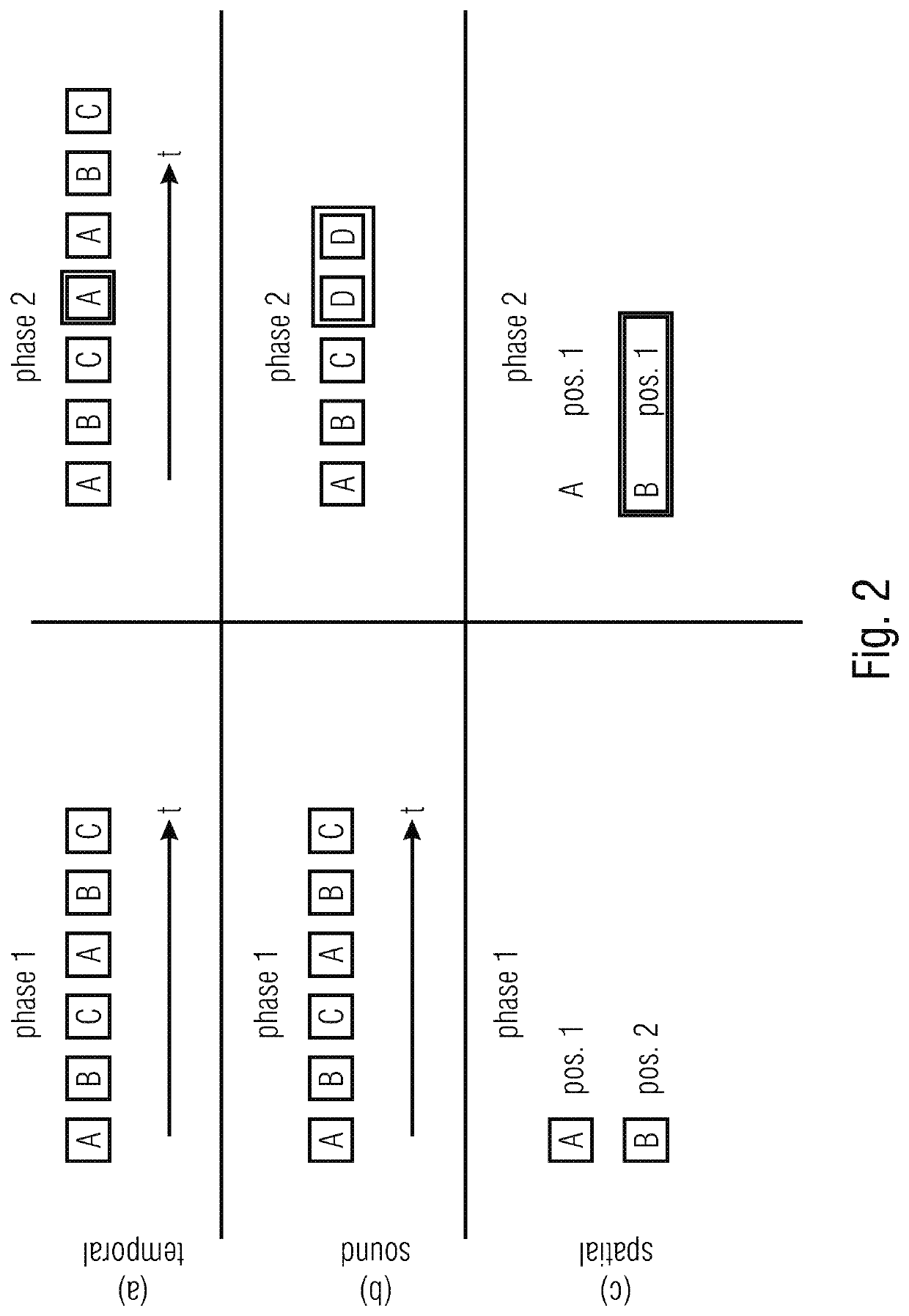Method and apparatus for recognizing acoustic anomalies
a technology of acoustic anomalies and methods, applied in the field of methods and apparatus for recognizing acoustic anomalies, can solve the problems of complex superposition of several sound sources, inability to define or describe precisely sound of anomalies (not-okay classes), and the ability to change the acoustic conditions of new algorithms for sound classification by means of deep neural networks, and the difficulty of recognizing anomalies
- Summary
- Abstract
- Description
- Claims
- Application Information
AI Technical Summary
Benefits of technology
Problems solved by technology
Method used
Image
Examples
Embodiment Construction
[0033]Before discussing the following embodiments of the present invention making reference to the appended drawings, it is pointed out that elements and structures of equal effect are provided with equal reference numbers so that the description thereof is mutually applicable or interchangeable.
[0034]FIG. 1 shows a method 100 subdivided into two phases 110 and 120.
[0035]In the first phase 110, which is referred to as adjusting phase, there are two basic steps. This is indicated by the reference numerals 112 and 114. Step 112 comprises a long-term recording of the acoustic normal state in the application scenario. The analysis apparatus 10 (cf. FIG. 3) is exemplarily set up in the target environment so that a long-term recording 113 of the normal state is detected. This long-term recording may exemplarily have a duration of 10 minutes, 1 hour, or 1 day (generally greater than 1 minute, greater than 30 minutes, greater than 5 hours or greater than 24 hours and / or up to 10 hours, up t...
PUM
 Login to View More
Login to View More Abstract
Description
Claims
Application Information
 Login to View More
Login to View More - R&D
- Intellectual Property
- Life Sciences
- Materials
- Tech Scout
- Unparalleled Data Quality
- Higher Quality Content
- 60% Fewer Hallucinations
Browse by: Latest US Patents, China's latest patents, Technical Efficacy Thesaurus, Application Domain, Technology Topic, Popular Technical Reports.
© 2025 PatSnap. All rights reserved.Legal|Privacy policy|Modern Slavery Act Transparency Statement|Sitemap|About US| Contact US: help@patsnap.com



